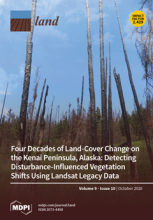Land Library Search
Through our robust search engine, you can search for any item of the over 73,000 highly curated resources in the Land Library.
If you would like to find an overview of what is possible, feel free to peruse the Search Guide.
/ library resources
Showing items 64 through 72 of 2217.Mountainous regions are more sensitive to climatic condition changes and are susceptible to recent increases in temperature. Due to urbanization and land use/land cover (LULC) issues, Cameron Highlands has been impacted by rising land surface temperature (LST) variation.
Understanding of people’s landscape preferences is important for decision-making about land planning, particularly in the disturbance patterns that usually occur in rural-urban gradients.
Central and Eastern Europe has experienced fundamental land use changes since the collapse of socialism around 1990.
Understanding future land-use related water demand is important for planners and resource managers in identifying potential shortages and crafting mitigation strategies. This is especially the case for regions dependent on limited local groundwater supplies.
Human land use intensity affects the surface energy balance by changing the biogeophysical parameters.
Elucidating the impact of Land Surface Temperature (LST) is an important aspect of urban studies. The impact of urbanization on LST has been widely studied to monitor the Urban Heat Island (UHI) phenomenon.
Ghana is urbanising rapidly, and over half of the country’s population have lived in urban areas since 2010.
Monitoring of irrigated land cover is important for both resource managers and farmers. An operational approach is presented to use the satellite-derived surface temperature and vegetation cover in order to distinguish between irrigated and non-irrigated land.
A framework was developed to elucidate (1) the drivers of land degradation, (2) pressures, (3) local impacts and vulnerabilities and (4) adaptation strategies.


